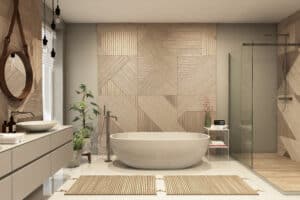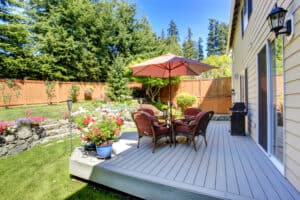The Rising Popularity of “Wellness Architecture”
The idea of wellness architecture or wellness-centric home design isn’t entirely new, although it largely seemed to pick up steam last year. Now, with the coronavirus still impacting our daily lives and our homes being where we spend a larger portion of our time, it may be an even more popular trend in architecture and interior design.
What Is Wellness Architecture?
Wellness architecture is an approach to home design centered on improving health—this can include mental and physical health. Millennials tend to be health-conscious and, in some cases, even obsessed, and Baby Boomers are also driving the trend.
Baby Boomers are considering their own goals to age-in-place, and they want to ensure their homes are going to facilitate this. With wellness architecture, you design your home with  the idea in mind that it influences your health on a holistic level. You might include things in your home that help you stay physically healthier—for example, adding a home gym.
the idea in mind that it influences your health on a holistic level. You might include things in your home that help you stay physically healthier—for example, adding a home gym.
You might set aside a bathroom that’s geared toward relaxation and rejuvenation, or a bedroom designed to get quality sleep. It sounds like an expensive trend, but that doesn’t necessarily have to be the case. There are simple things you can do to ensure your home promotes your wellness and the wellness of your family.
Design Utilitarian Spaces 
If you want a home centered on wellness, think about how you’re most going to use spaces. In the past, the goal was to have as many bedrooms as possible in a home, and that’s often what buyers were most looking for.
Now, families are having fewer children and spending more time at home, so they want spaces that reflect that. If you’re buying a new home or you’re redesigning your current one, think about what you’ll realistically use. For example, will you use a home gym or a yoga studio? Maybe you’re most likely to use a spa-like bathroom, or perhaps a large kitchen where you can prepare healthy foods.
Mood Boosters
If you’re like most Americans you may be working from home right now, educating your children there, and doing most of your leisure activities at home. What you surround yourself with during these times can have a significant effect on your mood, so keep that in mind.
Things that you can improve your mood in your home include live plants and natural light. Integrate décor that you find aesthetically pleasing, whether that’s art, or rich, textured fabrics as examples. Give yourself time to reflect on what makes you feel your best when you’re designing your home. There’s no one right answer as to what will work for everyone.
Removing Toxicity
Another way to design your home for wellness involves reducing your exposure to toxins.
Some of the ways to do this include:
- Use an air-purifying system to remove pollens and dust particles.
- If you’re renovating your home, try to use low-VOC products.
- Remove carpet and replace it with hard flooring.
- Consider using color temperature light bulbs as part of your smart home system. You can program them to match your body’s natural circadian rhythm, which can help your mood and productivity, and also help you wind down each night and sleep better.
Take It Outdoors
Finally, if you have outdoor space, maximize it. Getting outside, even if just for a few minutes a day can  have positive effects on your mental health as well as your physical health. For example, we’re increasingly finding out about the importance of vitamin D to prevent chronic illnesses.
have positive effects on your mental health as well as your physical health. For example, we’re increasingly finding out about the importance of vitamin D to prevent chronic illnesses.
Create an outdoor space that’s going to be usable for you and meets the needs of your family. Maybe you focus your outdoor area on dining or entertaining, or perhaps it’s a place where your children can play while you soak up the sunlight. Furnish your outdoor area as you would the indoors of your home in terms of comfort and functionality, to encourage you to get outside as much as possible.
Written by Ashley Sutphin
